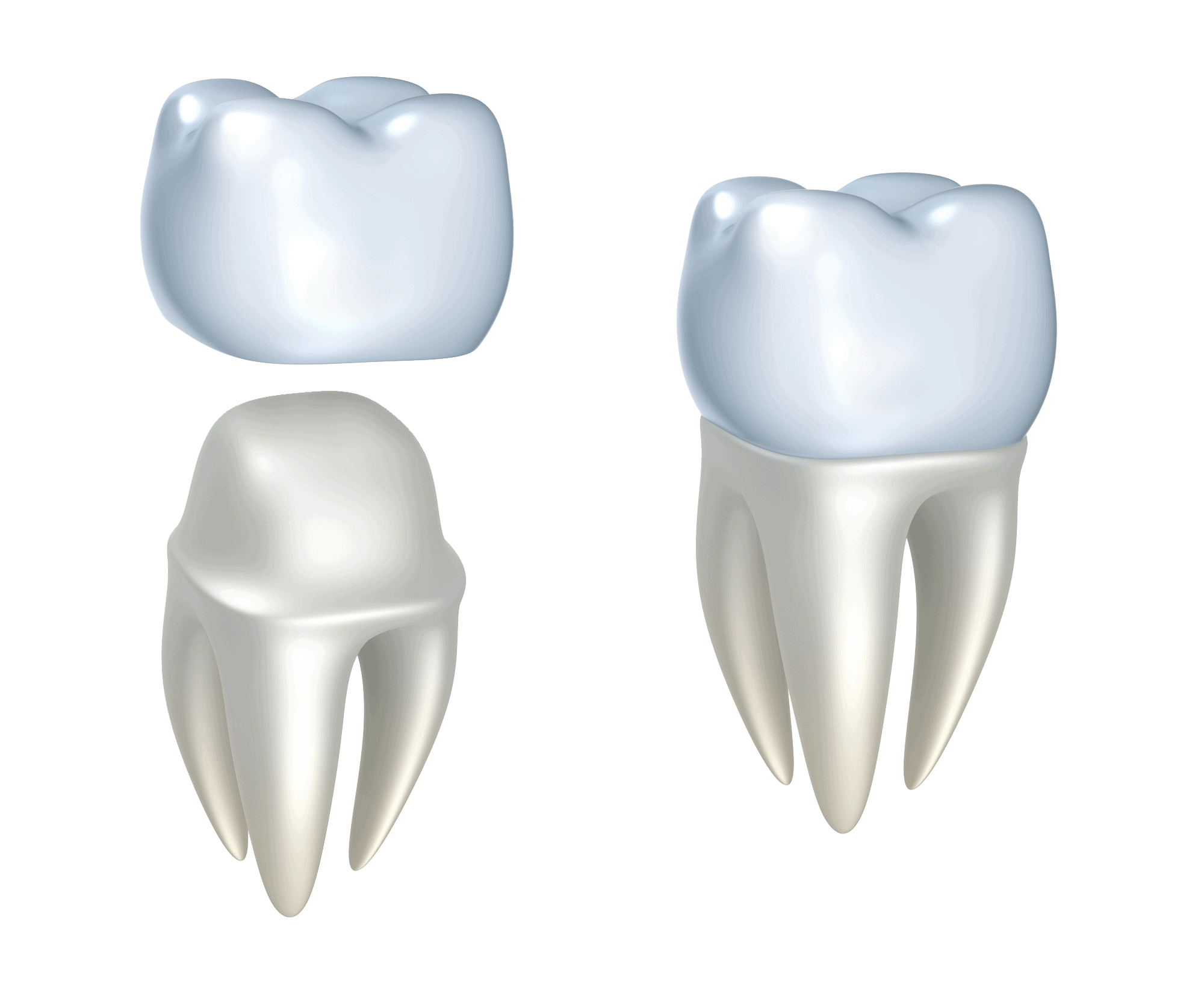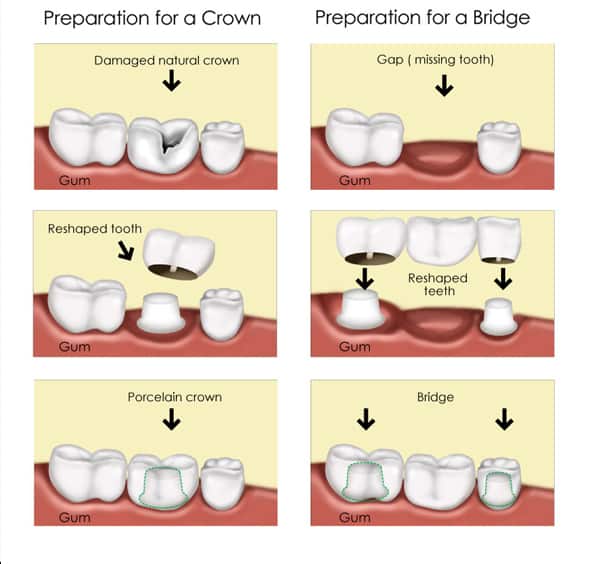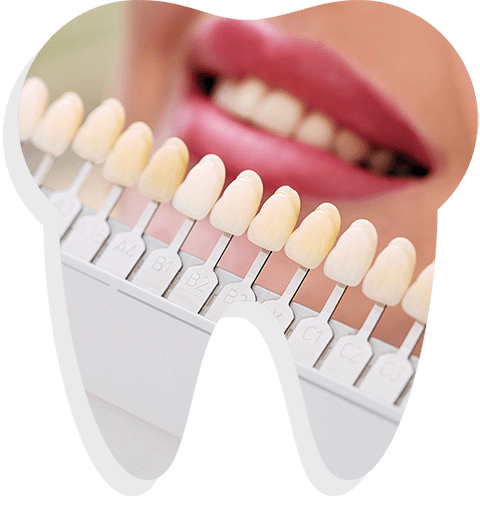when do I need dental crowning?

Here are some common reasons for dental crownings
- When a large filling is required and there isn't enough tooth structure and support remaining for the procedure
- When your tooth structure is weakened and to prevent further stress and fractures
- To repair a tooth that has fractures
- To cover a dental implant
- To cover a discoloured or poorly shaped tooth
- To cover a tooth that has undergone root canal treatment
- To attach a bridge
Procedure for Dental Crowns and Bridges
The procedure requires at least 2 dental visits
The purpose of the first visit is to examine and prepare the relevant teeth that is to be crowned, and to create an impression of the teeth so that the crown(s) can be constructed to fit properly. Your dentist will also put on a temporary crown/bridge during this visit.
The second visit is to fix on the dental crown when the dental laboratory has completed the construction of your permanent crown/bridge. The temporary crown will be removed and your dentist will fix the permanent custom-made crown/bridge in place.
FIRST APPOINTMENT: THE TOOTH-PREPARATION
Step 1
X-Ray
Dental X-ray is taken of the tooth and jawbone to investigate for signs of decay. (For some patients, root canal treatment may be required prior to the placement of a dental crown and/or bridge)
Step 2
Anaesthetic Administration
Before the start of any procedure on your tooth or teeth, your dentist will numb both your tooth and gum tissues around it for a painless experience.
Step 3
Tooth Shaping
For both dental crowning or bridging procedures, parts of your tooth structure will be trimmed and shaped to allow room for the crown(s) to be placed.
Step 4
Taking An Impression of Tooth
Once your tooth/teeth has been shaped, a paste will be spread over the area to be 'copied' before being pulled away. This holds the shape of the relevant teeth on it's surface for creating both your temporary and permanent custom-made crown. At this point, your dentist will also discuss the be best natural colour for your crown/bridge.
Step 5
Temporary Crown/Bridge Placement
The impression taken will be sent to the lab to produce the permanent fittings and this could take up to 3 weeks. During this time, you will wear a temporary version of your custom-made crown/bridge. This will protect your teeth and prevent it from chipping or shifting.
Step 6
Appointment Scheduling
Your dentist will schedule a second appointment with you for the permanent crown/bridge placement.
SECOND APPOINTMENT: THE PERMANENT PLACEMENT
Step 1
Temporary Fittings Removal
The dentist will remove the temporary crown/bridge and clean remnants of cement that remained on your teeth.
Step 2
Checking for the Fit and Appearance of Permanent Fitting
Your dentist will place the crown/bridge on your teeth to check if it fits perfectly. If adjustments are needed, he will trim and buffer it until the restoration fit is satisfactory.
Step 3
Cementing the Crown/Bridge
Once you and your dentist has agreed that the fit is satisfactory, your custom-made crown will be cemented to relevant teeth. When the cement has set, any excess will be removed. And we're done!

Types Of Dental Crowns
At AllSmiles Dental, we offer a range of materials for dental crowns:
Metal Crowns
Metal crowns that are made with precious gold alloys titanium alloys are stable, durable and strong. They often last longer than other materials. A major drawback to this durable option is its metallic appearance, and is mostly recommended for the less visible molars which need to withstand more biting and chewing forces.
Porcelain Bonded To Metal Crowns
One of the most common dental crowns that consist of a metal base and a porcelain overlay. This is a popular choice as it can match to the natural teeth colour. However, the porcelain portion may still be prone to chipping or breaking, showing the metal base.
All-Ceramic / All-Porcelain Crowns
Best recommended for the most visible teeth like the front teeth, all-ceramic or all-porcelain dental crowns has the best natural colour match among all other options. All-porcelain crowns look very natural and gives the appearance of natural teeth colour.


